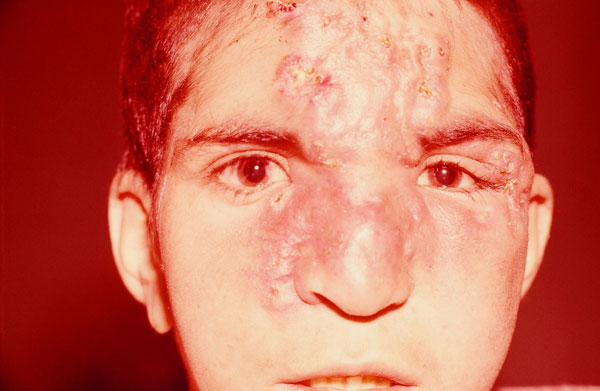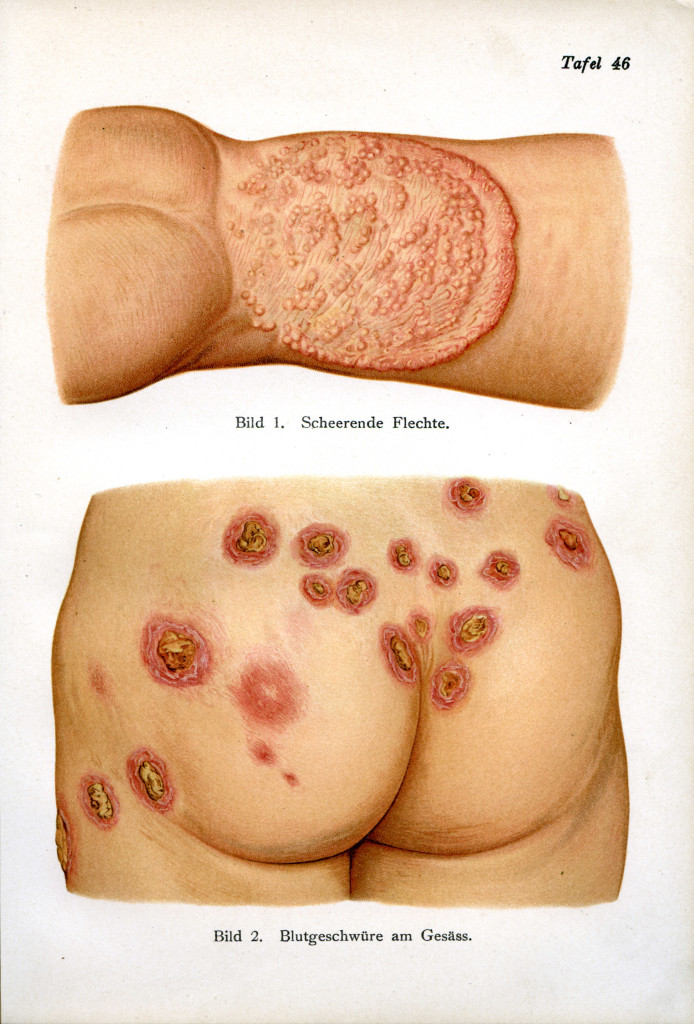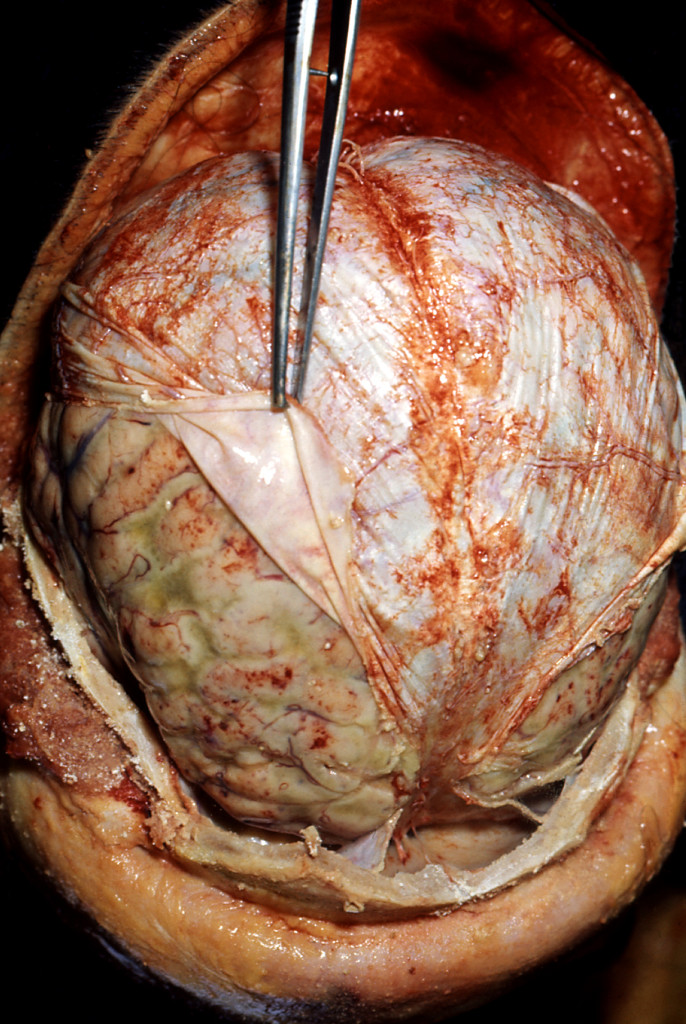It is unfortunate that our world is filled with so many painful, deadly, rare and strange diseases. Whether they are present at birth, or acquired later in life, most will cause unwanted physical and mental suffering. According to the National Organization For Rare Disorders database (NORD), there are around 6,800 known rare diseases in the United States alone. A disease is considered to be uncommon if it has affected less than 200,000 Americans.
With the help of advanced medicine, many have had their disorders controlled or cured. On the other hand, abnormal conditions have had doctors striving to find cures and medications to help stop or control them from becoming worse. Unfortunately, there are many cases where doctors cannot do a thing to prevent or stop them. However, with advanced technology always increasing, the chances for survival and perhaps a normal life are better than ever. Here we will discuss some of the strangest diseases in humanity.
Darier’s Disease
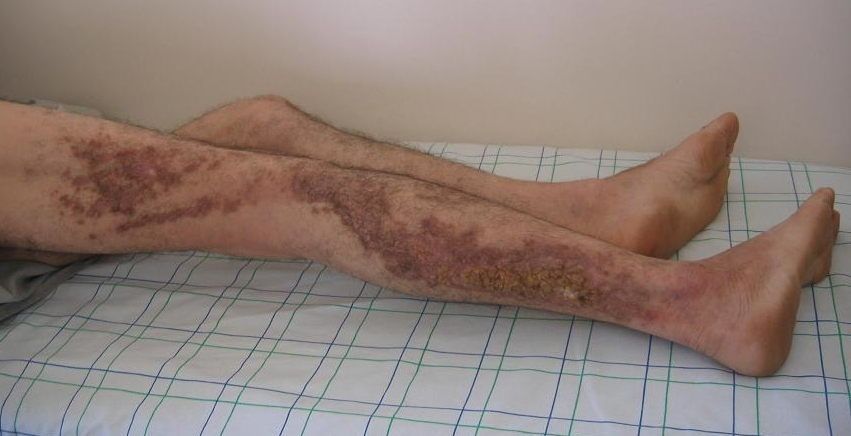
“Darier’s Disease” by Mariame Meziane, Rim Chraibi, Nadia Kihel, Badreddine Hassam, Karima Senouci is licensed under CC BY-SA 3.0
Darier’s disease is a rare hereditary skin condition that is characterized by dark and crusty wart-like blemishes on the skin. The crusty patches often contain pus. Extreme cases of this disease are more rare, but common cases will consist of just skin rashes that flare-up under conditions such as stress, high humidity and tight-fitting clothing. Some patients with mild forms of Darier’s will often have a short stature coupled with fingernails formed with vertical striations.
Other symptoms include thickened palms and soles, fragile fingernails, along with rashes from exposure to the humidity, sun and heat. The rashes often have a distinctive odor. Although the disease affects other areas of the body, it most commonly affects the neck, chest, ears, back, forehead and groin. Patients say the hard blisters can be extremely painful.
The condition was discovered by French dermatologist Ferdinand-Jean Darier. It affects both men and women and is not contagious. The disease generally starts in later teens or early adulthood. The symptoms are said to be caused by an abnormality in the desmosome-keratin (cytoskeletal components found in animal cells) filament complex that leads to a breakdown in cell adhesion. Fortunately, there is treatment for this rare disease.
Treatment: For the more severe cases, oral retinoids, topical or oral antibiotics, and other prescriptions are given. No specific treatment is required for minor cases. However, doctors recommend staying away from excessive heat, humidity, stress and clothes that fit too tight. Although this unusual disease is not deadly, it still causes physical and mental pain, stress and a big inconvenience.
Scheuermann’s Disease
Scheuermann’s disease is a self-limiting skeletal disorder of childhood. It is most commonly found in teenagers. The vertebrae happen to grow unevenly with the anterior (near the front) angle being often greater than the posterior (near the back).
Due to the uneven growth, the vertebrae shape has overcurvature. Unfortunately, because of the rigid apex of their thoracic vertebrae, patients with this condition cannot correct their posture. Another symptom of Scheuermann’s disease is painful neck and back pain from long periods of standing or other physical activity. They may also lose height (depending on the severity) and have a noticeable ‘hunchback’ posture.
Treatment: Oddly, the reason for Scheuermann’s disease is still unknown. The condition appears to be dependent on a number of different causes.
For less extreme cases, treatment using manual medicine and physical therapy can help, reverse or prevent it from becoming severe. For the more extreme cases, patients may be given a surgical procedure to prevent it from becoming even worse. For the most server cases (very rare), the condition may cause internal problems along with spinal cord damage.
Subconjunctival Hemorrhage

“Human Eye Showing Subconjunctival Hemorrhage” by James Heilman, MD is licensed under CC BY-SA 3.0
Subconjuntival hemorrhage is bleeding underneath the conjunctiva (the lining of the eyelids and covering of sclera). When the tiny blood vessels of the conjunctiva are ruptured, blood will leak into the space between the conjunctiva and sclera. There is no discharge from the eye. One with this condition may not even be aware they have it. They may find out they have it by taking a close look in the mirror, or having a friend or family member inform them.
It is weird that the hemorrhage can be caused simply from just a severe cough or sneeze. It can also be caused by high blood pressure, blood thinners, heavy lifting, vomiting, straining due to constipation or rubbing your eyes too hard. By visualizing this condition, it appears like it may have been caused by a severe trauma event.
One with subconjunctival hemorrhage may have a bruise that appears black underneath the skin or bright-red underneath the conjunctiva. The hemorrhage may eventually spread and turn green or yellow. Although the condition can appear frightening and possibly serious, it is actually painless and harmless. However, with extremely rare cases in elderly patients, the condition may be a warning sign of a potentially serious vascular disorder.
Treatment: There usually is no necessary treatment required for subconjunctival hemorrhage. The condition will usually go away on its own in approximately 2-3 weeks. However, artificial tears may be given for a few weeks.
Boils On The Buttocks
Boils are localized infections of the skin beginning as a reddened and tender area. The infected area usually becomes firm, hard and more tender. The center of the boil will eventually become filled with infection-fighting white blood cells (pus). The blood cells come from the bloodstream to assist in eradicating the infection. The pus will then form a head that can potentially drain out of the surface of the skin.
Boils can occur anywhere in the body, including the buttocks. Like the image above shows, they can spread all over. If you already hemorrhoids coupled with big boils spread throughout your buttocks, just imagine the unwanted discomfort and pain they would cause.
Rare Pilonidal Cysts On Buttocks: A pilonidal cyst is a rare abscess that occurs in the crease of the buttocks. It usually contains hair and skin debris. These types of cyst usually occur when a hair punctures the skin and then becomes embedded. The risk is increased by irritation from direct pressure such as long sitting periods and long trips. Pilonidal cysts are more common in men than women. They are said to not only be uncomfortable, but also very painful.
Treatment: If a boil does not drain on its own, surgery will likely be recommended.
Caudal Regression Syndrome
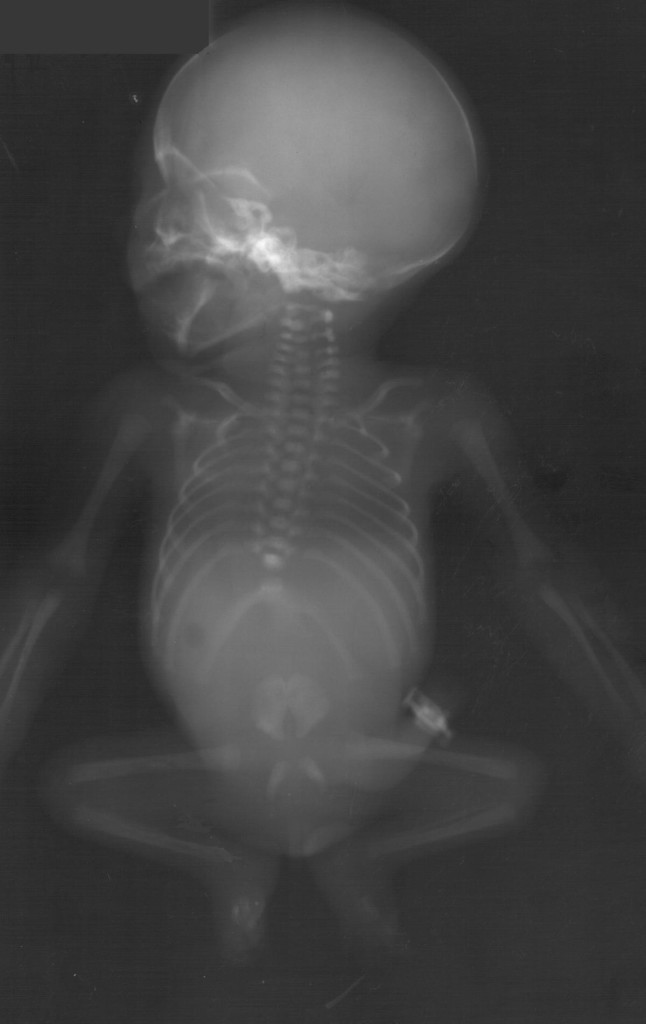
“Caudal Regression Syndrome Radiograph” by Halil Aslan, Halil Yanik, Nurgul Celikaslan, Gokhan Yildirim, Yavuz Ceylan. is licensed under CC BY 2.0
Caudal regression syndrome is an extremely rare disorder that is present before or at birth. It only occurs in about one in every 25,000 live births. The syndrome poses abnormal fetal development of the lower spine. It arises from a factor or various factors that are present around the 3rd to 7th week of fetal development.
There are several levels of malformation. The very least severe is a partial deformation of the sacrum, the second level bilateral deformation, with the most severe cases involving the complete absence of the sacrum.
The condition can come in a variety of forms such as partial absence of the tail bone regions of the spine, lower absence of the lower vertebrae, pelvis, parts of the thoracic and lumbar areas. In some cases, the patient may only have a small part of the spine missing. In the more severe cases, there can possibly be fused, webbed, or smaller lower extremities and even paralysis, along with bowel and bladder control usually being affected.
Treatment: Fortunately, cognitive impairment is not affected with this particular disability. Although surgery, prosthetics, colostomy and other procedures may be necessary to treat this condition, adults are still able to attend college and live independent lives.

“Jessica Reach” by Druidhills is licensed under CC BY 3.0
Jessica is a skilled athlete born with Caudal Regression Syndrome.
Enamel Hypoplasia
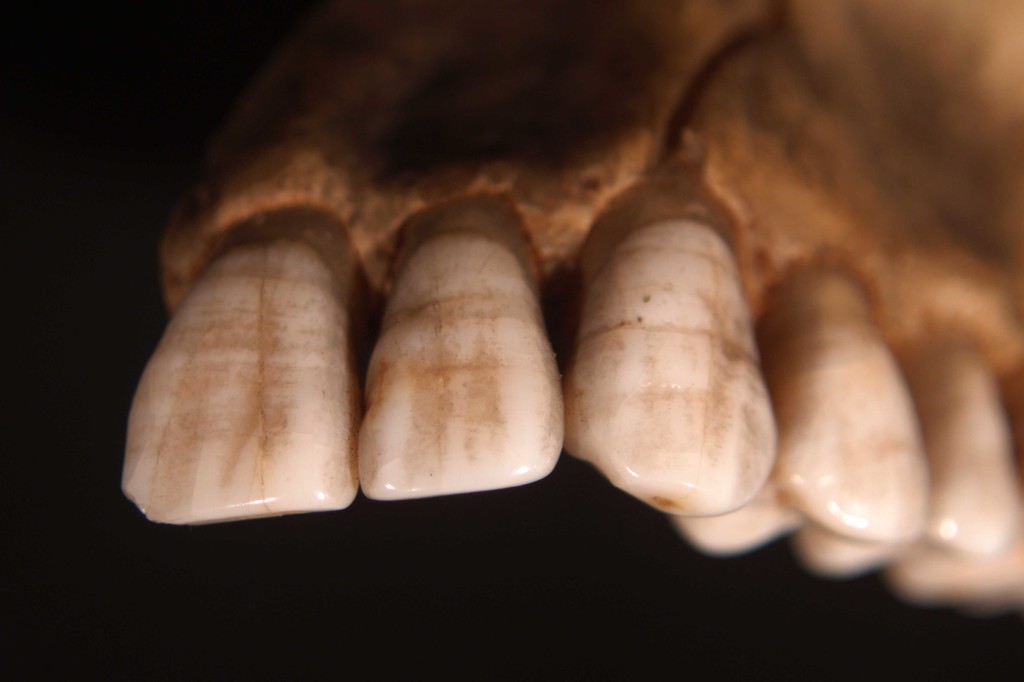
“Teeth displaying Enamel Hypoplasia Lines” by Otis Historical Archives Nat’l Museum of Health & Medicine is licensed under CC BY 2.0
Enamel hypoplasia is an acquired or hereditary defect formation of the enamel of the teeth. The enamel coating is much thinner than normal and can also be missing in some areas. Although the enamel is still hard, it can also be thin, malformed and deficient in amount.
Generally, the tooth has a pit in it. In some cases, the natural enamel crown has a hole in it while in the more extreme cases, the tooth has no enamel, leaving dentin as the remaining component of the teeth.
Causes of this condition are from gene mutations, nutritional deficiencies, bacterial infections, slow enamel formation, various diseases and other environmental factors.
Treatment: The treatment of enamel hypoplasia depends on its location and severity. For the more mild cases, artificial enamel is given. For the severe cases where the teeth are lacking the majority of their enamel, metal crowns and artificial teeth are given as treatment.
Bacterial Meningitis
Bacterial meningitis is an infection of the meninges (three layers of protective tissue) that surround the brain and spinal cord. It can be caused by a fungal, bacterial or viral infection. It can be chronic or mild, but those experiencing symptoms are advised to see a doctor immediately.
Children between the ages of one month and two years are at a highest risk of infection. Adults are at a risk for various reasons such as alcohol abuse, chronic nose and ear infections, or acquire pneumococcal pneumonia.
What is strange about this infection is that sometimes meningitis occurs for no known reason. This fact has likely raised more paranoia for hypochondriacs. However, bacterial meningitis usually occurs following a head injury or a weakened immune system. The causing bacteria is most often found in the environment as well as in your nose and respiratory system.
Treatment: Unfortunately, there is a 10 percent death rate from this unwanted infection. This is why it is so crucial to catch it early and prevent it from causing death. The infection can cause the surrounding brain tissues to swell, which can interfere with blood flow. The result of blood flow interference can lead to paralysis or stroke. Bacterial meningitis is treated with antibiotics and fluids to replenish loss from sweating, loss of appetite and diarrhea.
Walking Corps Syndrome (Cotard’s Syndrome)

“Maxim Halloween Bash” by Eva Rinaldi is licensed under CC BY-SA 2.0
Walking corps syndrome is a very rare mental illness where the patient believes he or she is either dying or does not even exist. They may also have the delusion that they lost their blood and/or internal organs. It is linked to depression, suicidal ideation, sleep deprivation and derealization. Of course, people suffering with this illness are held back from living a normal life.
This unusual disorder is caused by a malfunction in an area of the brain called fusiform gyrus and also in the amygdala. This can result in the lack of emotion when viewing a familiar face because the fusiform gyrus plays an important role of recognizing faces . Due to this disconnection, it can also result in complete detachment.
Treatment: Pharmacological treatments are often given to patients suffering from Cotard’s.
The Recent Resurrection Of A Giant Virus 30,000 Years Later Raises Questions
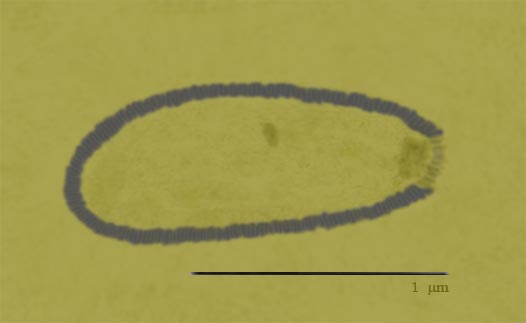
“Pithovirus Sibericum Sketch” by Packa is licensed under CC BY-SA 3.0
In March of 2014, a mysterious and giant virus was discovered buried in Siberian permafrost. By drilling horizontally into ice, drillers were able to extract samples. Researchers studied an ultrathin section of a Pithovirus particle in an infected Acanthamoeba castellanii cell. The researchers then took samples of the permafrost and put it into direct contact with amoebas (single-celled organism) in Petri dishes. They then waited to see the surprising results.
After further investigation, they discovered the virus had killed the organisms. The virus was said to belong to a previously unknown family of viruses (Pithovirus) that share just a third of its genes with any known organism and only 11 percent with other viruses.
This mysterious virus only infects single-celled organisms because it lacks the characteristic cellular machinery and metabolism of microorganisms. It closely resembles the largest viruses ever found. Although the origins of the virus still remain a mystery, scientists believe it had most likely evolved from single-celled parasites following the loss of essential genes.
Although the virus is said to be harmless to humans, the discovery raises interesting questions. Climate change may have brought the virus to the surface. Therefore, other potential viruses that were previously long-dormant could come back.
If there was a deadly virus that happened to be resurrected (a virus our bodies had never encountered), our immune systems may not be able to fight it off. However, scientists are optimistic that the chances of deadly viruses reaching humans is slim. A marine virologist at the University of British Columbia in Canada says the chances of humans getting a potentially harmful virus is low because they are not abundant enough to circulate and affect the heath of humans.
More Unusual Diseases You May Not Of Heard Of
Below are two great videos with information on some diseases that you may not be aware of.
These are some diseases you just don’t hear about. Luckily, some can be controlled or even cured. Smallpox was considered to be one of the deadliest diseases around, but was fortunately eradicated by vaccination. The last natural case was diagnosed on October 26, 1977. Over time, scientists will find even more ways to tackle these unwanted conditions.
Want to share more strange and unusual illnesses that were not mentioned in our post? As we previously mentioned, they out there. We always want to hear your interesting input.

